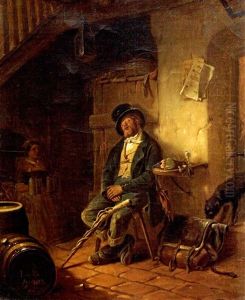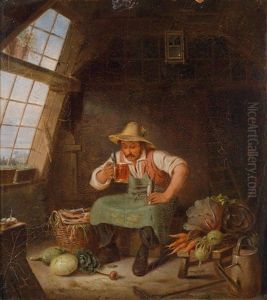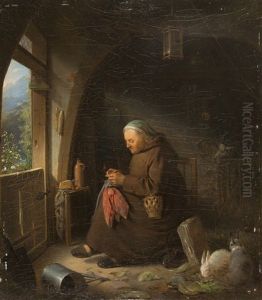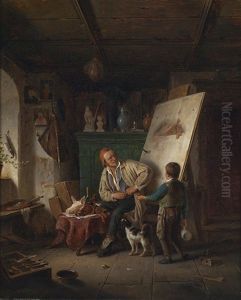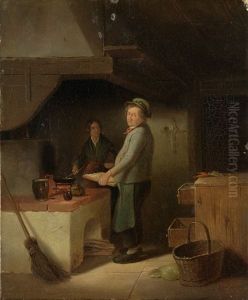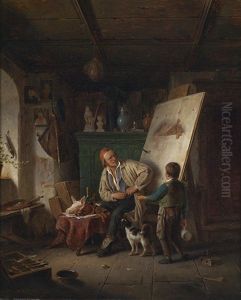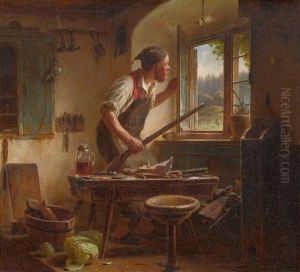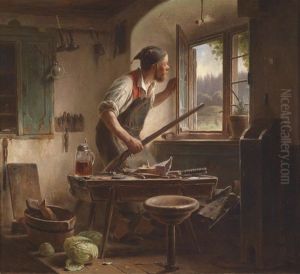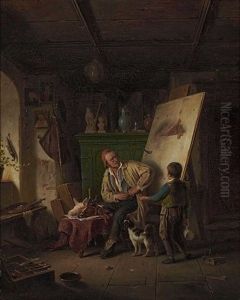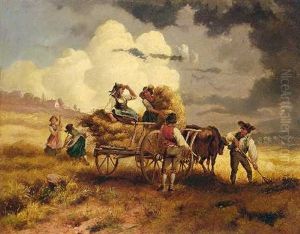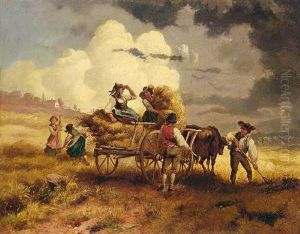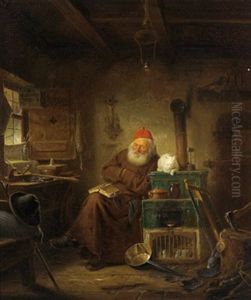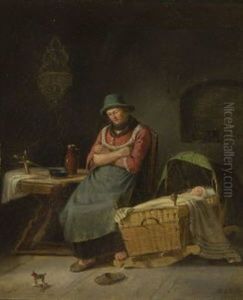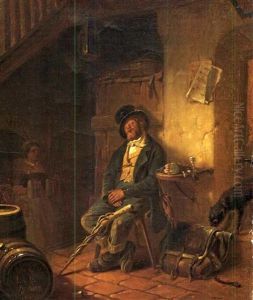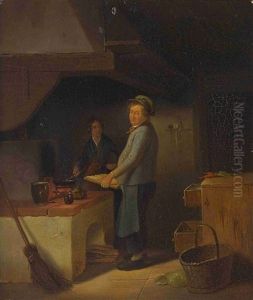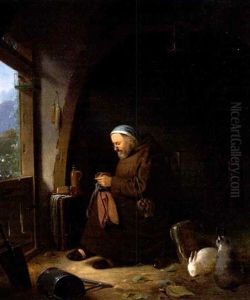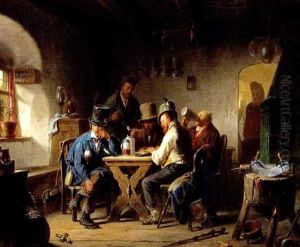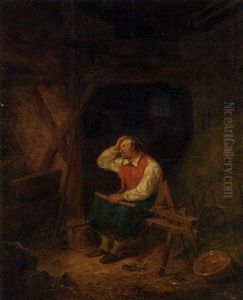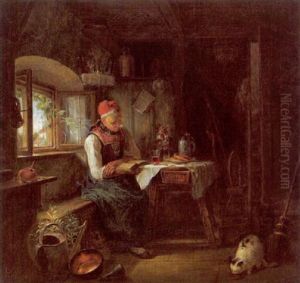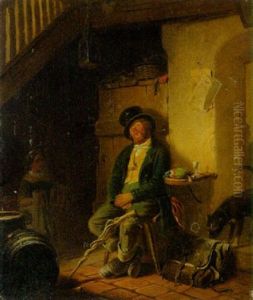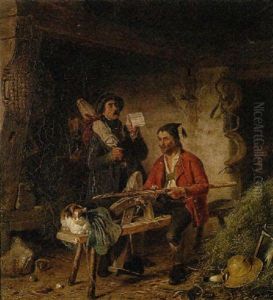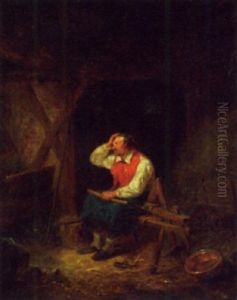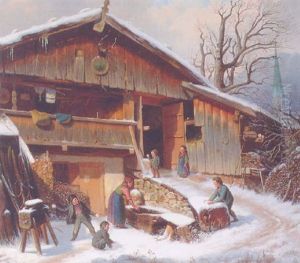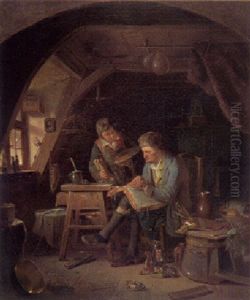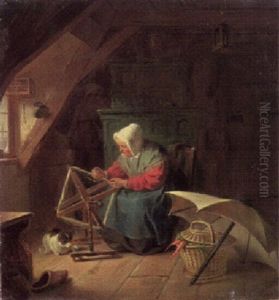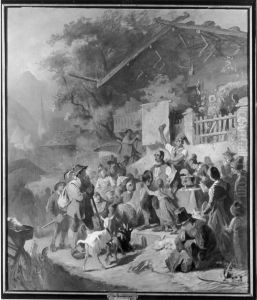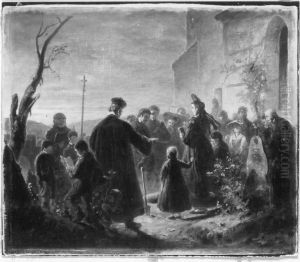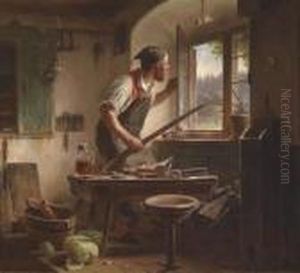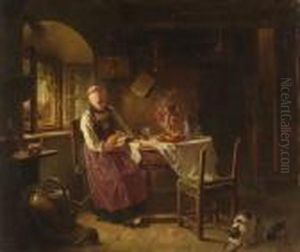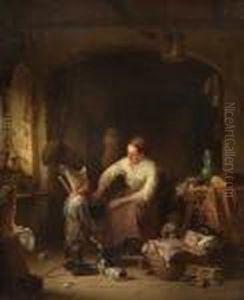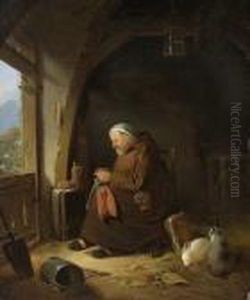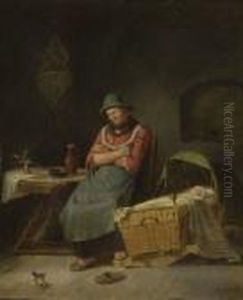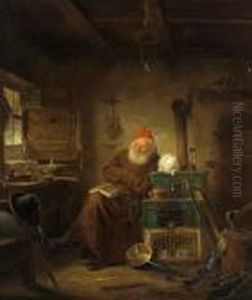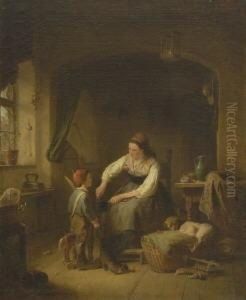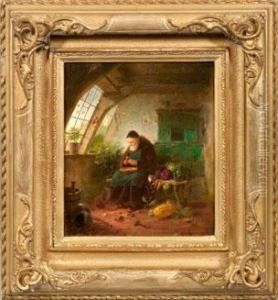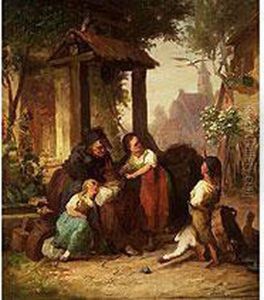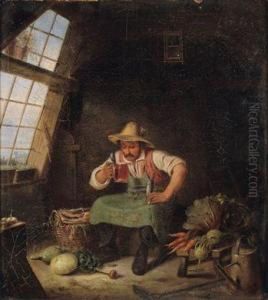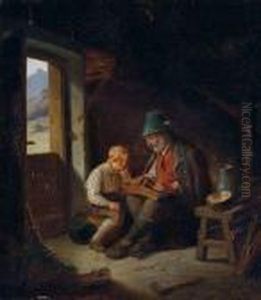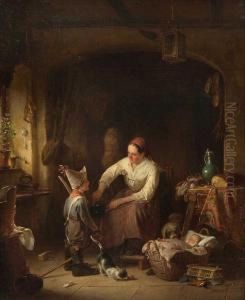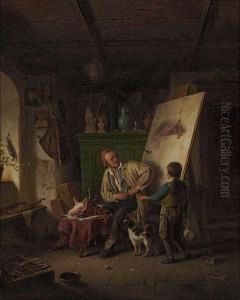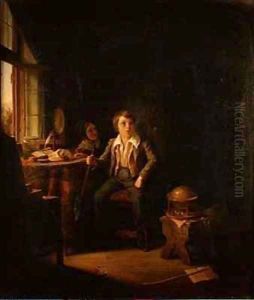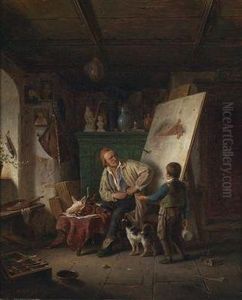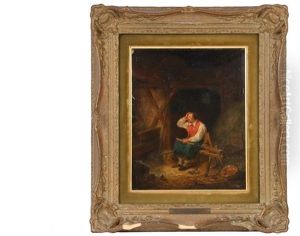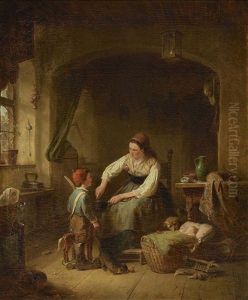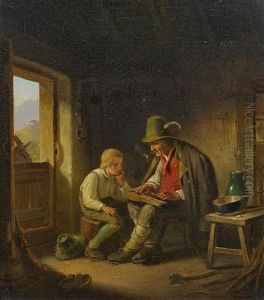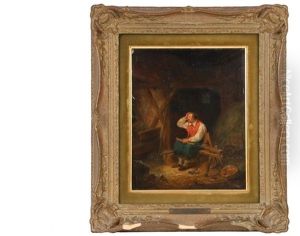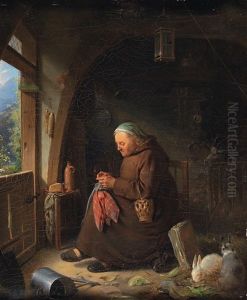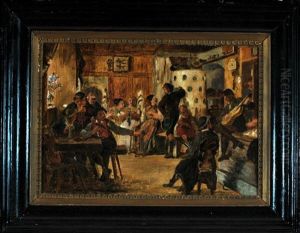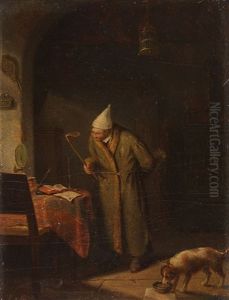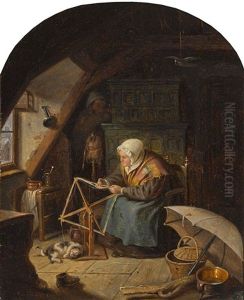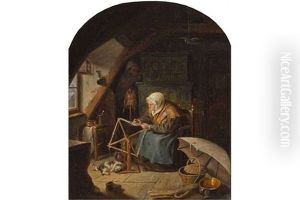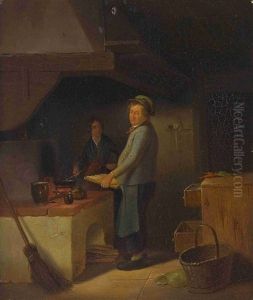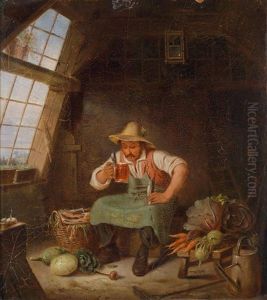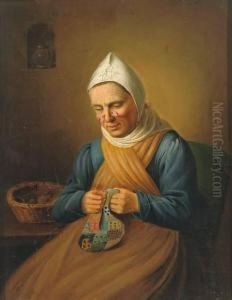Karl Von Enhuber Paintings
Karl von Enhuber was a German painter renowned for his genre scenes and historical paintings, born in 1811 in Ingolstadt, Bavaria, and died in 1867. His early life was marked by a profound interest in art, which led him to pursue formal education in the field. He initially studied at the Academy of Fine Arts in Munich, where he was influenced by the works of contemporary German artists and the rich history of European art. Von Enhuber's training at the academy equipped him with the technical skills and artistic sensibilities that would define his career.
During his career, von Enhuber developed a distinctive style characterized by meticulous attention to detail, vibrant coloration, and a keen interest in capturing the nuances of human emotion and daily life. His genre scenes, often set in the Biedermeier period, provided a glimpse into the social customs and domestic lives of his era, making his work valuable not only for its artistic merit but also for its historical significance.
Von Enhuber's historical paintings were equally notable. He had a talent for bringing historical moments to life with a dramatic flair, often focusing on key events and figures in Bavarian and German history. His work in this area reflected a deep reverence for his heritage and an understanding of the importance of history in shaping cultural identity.
Throughout his life, von Enhuber enjoyed a degree of success and recognition. He exhibited his work in various prestigious venues, including the Royal Academy of Arts, and his paintings were sought after by collectors and art enthusiasts of his time. Despite this, he remained relatively unknown outside of Germany until after his death, when the broader European art community began to appreciate the depth and breadth of his contributions to the genre and historical painting.
Karl von Enhuber's legacy is preserved in the collections of several German museums, where his paintings continue to be admired for their artistic excellence and their insightful portrayal of 19th-century life. His work stands as a testament to the richness of German art in the 19th century and remains a subject of study for art historians and enthusiasts alike.
